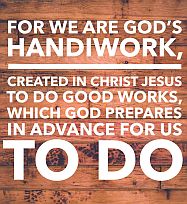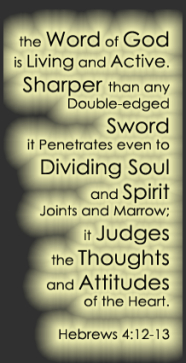•••by Clarke Dixon (click here to read at source)
On Sunday we read Matthew 1:1-17 as one of the scripture readings. No doubt some of the people were wondering why I chose it. I was wondering why I didn’t ask someone else to read it! It is one of those passages that is full of long names tracing an even longer genealogy. It is hardly ever read in church and rarely makes anyone’s “favorite verses” list. So why did I choose it? Or better question, why did Matthew choose to begin his account of Jesus with it?
Some would think that Matthew gets off to a tedious and boring start. Wouldn’t the account of Jesus’ birth have made a much more riveting beginning? Except, as Matthew points out, you can’t begin a historical account of Jesus with the birth of Jesus. You need to go much further back than that. The history of Jesus is bound up with the history of all God’s people through the ages. In beginning his account of Jesus with the genealogy from Abraham on, Matthew may as well have said “insert the entire history of the God’s people here.” Jesus is intimately connected with all that has gone on before and all that has gone on before is intimately connected with Jesus.
When we look closely at Matthew, it is little wonder his Gospel comes first in the New Testament, for of all Gospels, Matthew is the most keen to point out the link between the Old and New Testaments, between the promises and prophecies God gave his people in the past and the fulfillment of them through Jesus. Matthew’s account of Jesus provides a bridge for God’s people to come to faith in God’s Messiah. We will see some examples of this shortly.
But first, who is Matthew and why should we listen to him? Those of us who are Christian will naturally point to the inspiration of the Holy Scriptures by the Holy Spirit, so we trust them even if we can’t positively identify the authors. The author behind the author is God. But even the non-believer has good reason to stop and consider Matthew’s account. Many tend to think that the Gospels were written so long after the events they describe that the Jesus they describe is a fabrication. However, we have good reasons to believe that Matthew, Mark, and Luke, at least, were written somewhere in the 50’s to 60’s, so only 20-30 years following the events of Jesus when plenty of eyewitnesses were still around to corroborate all that is written. In the case of Matthew we have no reason to believe that the records of the early Church are wrong in ascribing them to the disciple Matthew Levi. He was the tax collector that Jesus called to be one of the twelve close disciples. Therefore he was certainly close to the action and therefore an eyewitness to much he writes about.
 So in what ways is an eyewitness showing us the bridge between God’s promises to His people and His fulfillment of them through Jesus? Let’s take a look at some examples of how Matthew’s account begins by building bridges to the Hebrew Scriptures. In addition to the genealogy, which itself confirms that Jesus is a proper descendant of King David, the first four mentions of Jesus all speak of him as “Messiah” which is God’s “anointed,” that is, the one prophesied in the Old Testament. Next, all through the account of Jesus’ birth we have the expression of “so it can be fulfilled” and then a quote from the Old Testament. This happens quite often, for example in 1:22; 2:15; 2:17,18; 2:23.
So in what ways is an eyewitness showing us the bridge between God’s promises to His people and His fulfillment of them through Jesus? Let’s take a look at some examples of how Matthew’s account begins by building bridges to the Hebrew Scriptures. In addition to the genealogy, which itself confirms that Jesus is a proper descendant of King David, the first four mentions of Jesus all speak of him as “Messiah” which is God’s “anointed,” that is, the one prophesied in the Old Testament. Next, all through the account of Jesus’ birth we have the expression of “so it can be fulfilled” and then a quote from the Old Testament. This happens quite often, for example in 1:22; 2:15; 2:17,18; 2:23.
We want to be careful here to not get so wrapped up in the details that we miss the overall point. Yes there are individual prophecies that Jesus fulfills, but these point to the fact that Jesus is the grand fulfillment of the grand hope God had instilled in His people all throughout history. The promised Messiah is here and his name is Jesus! The promised salvation is here and it is through Jesus!
The Gospel also concludes in a way which builds bridges to the Old Testament:
Now the eleven disciples went to Galilee, to the mountain to which Jesus had directed them. When they saw him, they worshiped him; but some doubted. And Jesus came and said to them, “All authority in heaven and on earth has been given to me. Go therefore and make disciples of all nations, baptizing them in the name of the Father and of the Son and of the Holy Spirit, and teaching them to obey everything that I have commanded you. And remember, I am with you always, to the end of the age.” Matthew 28:16-20
The mention of Jesus meeting the disciples on the mountain is another important reference to the Old Testament, for it was upon a mountain that Moses received the law. Now One greater than Moses is here: “All authority in heaven and on earth has been given to me. Go therefore . . . teaching them to obey everything that I have commanded.” It is significant that Jesus points to his own teaching while on the mountain, and not the law.
Another reference to the Old Testament within these concluding words of Jesus is “Go therefore and make disciples of all nations.” Here we are to think back to Abraham where the nation of Israel had its beginning:
Now the Lord said to Abram, “Go from your country and your kindred and your father’s house to the land that I will show you. I will make of you a great nation, and I will bless you, and make your name great, so that you will be a blessing. I will bless those who bless you, and the one who curses you I will curse; and in you all the families of the earth shall be blessed.” (Genesis 12:1-3)
Remembering that Matthew begins his Gospel account with a genealogy that starts with Abraham, we are meant to see here that the grand story which begins with a promise of blessing for all the nations finds its conclusion, or rather a new beginning with Jesus. It is in Jesus that the promise is kept. It is in Jesus that all nations can now find blessing.
But Jesus’ words on the mountain point us even further back in the Hebrew Scriptures than Abraham: “And remember, I am with you always, to the end of the age.” This takes us right back to Genesis chapters one and two when God dwelled with Adam and Eve in perfect relationship. But whereas we can speak of God dwelling with Adam and Eve at the first, in chapter three we see Adam and Eve no longer dwelling with God, being barred from the Garden as a consequence of their sin.
The Hebrew Scriptures go on to relate how through history there was some question as to whether God was with them or not. The tabernacle, and later temple, both pointed to God’s presence, yet also God’s distance. The tabernacle was right among the people, yet only a few could get near and only through a lot of rigmarole of ritual cleansing. Through the temple God was symbolically saying “I want to dwell with you, be with you, and be your God, but I am holy and you are not so I can’t really.” But Jesus says “remember, I am with you always, to the end of the age.” With God all things are possible including getting us from a Genesis three sin conundrum to a Revelation twenty-one salvation solution:
And I heard a loud voice from the throne saying, “See, the home of God is among mortals. He will dwell with them; they will be his peoples, and God himself will be with them. Revelation 21:3
Jesus not only fulfills Old Testament prophecies, he also is the solution to Old Testament problems, or rather the sin problem plaguing all of humanity, but revealed to us in the Hebrew Scriptures.
By now I hope you get the point that Matthew was writing to help the person whose hopes were pinned on the God of Israel, to now pin their hopes on Jesus. But more than that, Matthew was writing for anyone who knows that humanity needs help. By pointing back to the Hebrew Scriptures Matthew is telling anyone and everyone that God has been working all along to reestablish his relationship with humanity – and through Jesus your are invited into relationship with God. While the book of Matthew is a bridge between the Old and New Testaments, it points far beyond itself, to One who is a true bridge. The bridge is not a new way of doing religion, the bridge is a person, Jesus Christ. If Matthew is a bridge helping us get from Old Testament hopes hopes to New Testament realities, Jesus is the bridge getting us from Genesis 3 problems to Revelation 21-22 possibilities, from sin to salvation. Is there a bridge you need to cross?
All Scripture references are taken from the NRSV









Leave a comment